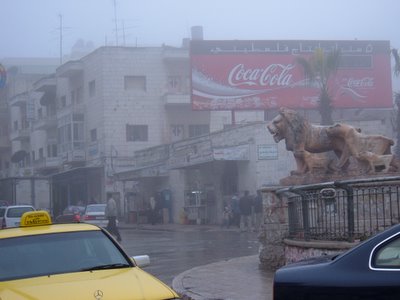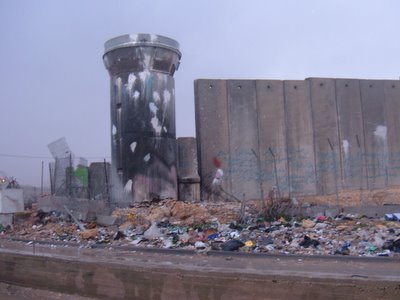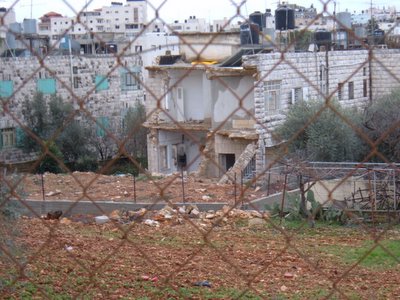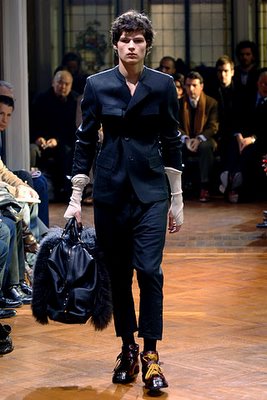Assisted Living
Reporting From the L.A. Office: An Assistant's Cold Feet
By Sophie Sharp
 I was far too smart to become a mother at 20. Good girls like me aren’t mothers until they’re 29 and married happily to an upwardly mobile Jewish doctor. But destiny had other plans for me.
I was far too smart to become a mother at 20. Good girls like me aren’t mothers until they’re 29 and married happily to an upwardly mobile Jewish doctor. But destiny had other plans for me.
When G came into my life, there was instantly room for no one else. There were so many responsibilities: feeding him, dressing him, monitoring his bowel movements, making sure he was meeting the right people, getting him where he needed to be… His neediness and unconditional trust validated my efforts, but his utter inability to express gratitude or appreciation for the sacrifices I made for him made our relationship painfully one-sided. G was not my child. Nor was he my lover, my ailing relative, or any man I should ever have known or been responsible for so intimately. G was my boss, and for four bitter (and pretty fucking unsweet) months I was his second assistant, which was more motherly responsibility than I had ever intended.
 When Tom Ford ended his legendary tenure at Gucci, Time Magazine asked him “What was the biggest shock for you when you left?” His response: “I could not even send an e-mail because I had three assistants, so I never had to learn…I don't think I was actually a contemporary person any longer…I hadn't been in a grocery store in years.”
When Tom Ford ended his legendary tenure at Gucci, Time Magazine asked him “What was the biggest shock for you when you left?” His response: “I could not even send an e-mail because I had three assistants, so I never had to learn…I don't think I was actually a contemporary person any longer…I hadn't been in a grocery store in years.”
This comment must have struck other readers as petty, ridiculous, and humorously exaggerated. Having worked for G, a mini-mogul of perhaps quarter scale to Tom Ford, I understood it completely.
 I jest only mildly when I refer to my duties for G as motherhood. Last Rosh Hashanah I had dinner with a young family friend. She had a three-month-old child, and I had my new job. The similarities between us were frightening. We were both sleep deprived, strained in our interpersonal relationships, and letting ourselves fall into physical disarray. Each of us attended nearly selflessly to another human being. But my family friend had an advantage. Her baby knew when it was hungry, I had to remind mine.
I jest only mildly when I refer to my duties for G as motherhood. Last Rosh Hashanah I had dinner with a young family friend. She had a three-month-old child, and I had my new job. The similarities between us were frightening. We were both sleep deprived, strained in our interpersonal relationships, and letting ourselves fall into physical disarray. Each of us attended nearly selflessly to another human being. But my family friend had an advantage. Her baby knew when it was hungry, I had to remind mine.
I would walk into his office and prompt him, “Okay G, lunchtime. What do you think today?” He would shoot me a pouty look. This was usually a sign that he had been hungry for a while, but was not aware of it. It was also a signal that I was going to have to list off lunch places until he found something he liked, “Macrobiotic…Thai…Chinese…Deli…”
 G would make his selection, I would call and order (he always got the same thing, like a four year old, so I had his orders memorized). He would then scowl at me until the food arrived…as though I could expedite his Brazilian food through Los Angeles traffic.
G would make his selection, I would call and order (he always got the same thing, like a four year old, so I had his orders memorized). He would then scowl at me until the food arrived…as though I could expedite his Brazilian food through Los Angeles traffic.
Lunch was only one matter I attended to for G. He had a fondness for colonics, which I scheduled for him with alarming frequency. I was privy to an uncomfortable level of intimacy with G’s bowel movements. I consider this task only slightly less odious than changing diapers, as it was also accompanied by a horrible recurrent vision of him, lying on his side in the clinic, naked with a plastic tube stuffed up his ass.
 Some tasks were more obnoxious than painful. I was responsible for the entire contents and meticulous upkeep of his calendar and personal life. When his friends had birthdays, I bought and sent them gifts. When he needed to go to the doctor or dentist, I made the appointments (It is worth noting that my own mother still makes MY appointments to go to the doctor and dentist). When he needed to wake up in the morning for a call or a meeting, I had to call him until he crankily conceded to get out of bed. When he had a television taping or media appearance, I had to remind him what clothing to wear. When he decided to impulsively cancel meetings and phone calls, I was the one who e-mailed the other assistant to apologize for his unpredictable rudeness. He was functionless without me, paralyzed by some combination of incompetence and vanity.
Some tasks were more obnoxious than painful. I was responsible for the entire contents and meticulous upkeep of his calendar and personal life. When his friends had birthdays, I bought and sent them gifts. When he needed to go to the doctor or dentist, I made the appointments (It is worth noting that my own mother still makes MY appointments to go to the doctor and dentist). When he needed to wake up in the morning for a call or a meeting, I had to call him until he crankily conceded to get out of bed. When he had a television taping or media appearance, I had to remind him what clothing to wear. When he decided to impulsively cancel meetings and phone calls, I was the one who e-mailed the other assistant to apologize for his unpredictable rudeness. He was functionless without me, paralyzed by some combination of incompetence and vanity.
On good days his utter uselessness was endearing. He once called to find out his own address from me. On my favorite day of all, he asked me to spell a word for him. The word “legal.” But ultimately it wore me down. It was depressing to be enslaved by this idiot savant (20 parts idiot, 1 part savant, maybe). I’m too immature to be in a long term relationship, I should have known I was too young to be a mother.
 I know my job was typical, probably less demanding than that of many assistants that populate Los Angeles. Other assistants at other companies work for monster bosses, whose demands and needs dwarf G’s. Blowjobs, babysitting, and blood donors are just a few of the horror stories I’ve heard.
I know my job was typical, probably less demanding than that of many assistants that populate Los Angeles. Other assistants at other companies work for monster bosses, whose demands and needs dwarf G’s. Blowjobs, babysitting, and blood donors are just a few of the horror stories I’ve heard.
Maybe it wasn’t the job, and I just wasn’t cut out for this kind of motherhood. In the city of ego, I couldn’t get rid of mine for long enough to groom someone else’s.
By Sophie Sharp
 I was far too smart to become a mother at 20. Good girls like me aren’t mothers until they’re 29 and married happily to an upwardly mobile Jewish doctor. But destiny had other plans for me.
I was far too smart to become a mother at 20. Good girls like me aren’t mothers until they’re 29 and married happily to an upwardly mobile Jewish doctor. But destiny had other plans for me.When G came into my life, there was instantly room for no one else. There were so many responsibilities: feeding him, dressing him, monitoring his bowel movements, making sure he was meeting the right people, getting him where he needed to be… His neediness and unconditional trust validated my efforts, but his utter inability to express gratitude or appreciation for the sacrifices I made for him made our relationship painfully one-sided. G was not my child. Nor was he my lover, my ailing relative, or any man I should ever have known or been responsible for so intimately. G was my boss, and for four bitter (and pretty fucking unsweet) months I was his second assistant, which was more motherly responsibility than I had ever intended.
 When Tom Ford ended his legendary tenure at Gucci, Time Magazine asked him “What was the biggest shock for you when you left?” His response: “I could not even send an e-mail because I had three assistants, so I never had to learn…I don't think I was actually a contemporary person any longer…I hadn't been in a grocery store in years.”
When Tom Ford ended his legendary tenure at Gucci, Time Magazine asked him “What was the biggest shock for you when you left?” His response: “I could not even send an e-mail because I had three assistants, so I never had to learn…I don't think I was actually a contemporary person any longer…I hadn't been in a grocery store in years.”This comment must have struck other readers as petty, ridiculous, and humorously exaggerated. Having worked for G, a mini-mogul of perhaps quarter scale to Tom Ford, I understood it completely.
 I jest only mildly when I refer to my duties for G as motherhood. Last Rosh Hashanah I had dinner with a young family friend. She had a three-month-old child, and I had my new job. The similarities between us were frightening. We were both sleep deprived, strained in our interpersonal relationships, and letting ourselves fall into physical disarray. Each of us attended nearly selflessly to another human being. But my family friend had an advantage. Her baby knew when it was hungry, I had to remind mine.
I jest only mildly when I refer to my duties for G as motherhood. Last Rosh Hashanah I had dinner with a young family friend. She had a three-month-old child, and I had my new job. The similarities between us were frightening. We were both sleep deprived, strained in our interpersonal relationships, and letting ourselves fall into physical disarray. Each of us attended nearly selflessly to another human being. But my family friend had an advantage. Her baby knew when it was hungry, I had to remind mine.I would walk into his office and prompt him, “Okay G, lunchtime. What do you think today?” He would shoot me a pouty look. This was usually a sign that he had been hungry for a while, but was not aware of it. It was also a signal that I was going to have to list off lunch places until he found something he liked, “Macrobiotic…Thai…Chinese…Deli…”
 G would make his selection, I would call and order (he always got the same thing, like a four year old, so I had his orders memorized). He would then scowl at me until the food arrived…as though I could expedite his Brazilian food through Los Angeles traffic.
G would make his selection, I would call and order (he always got the same thing, like a four year old, so I had his orders memorized). He would then scowl at me until the food arrived…as though I could expedite his Brazilian food through Los Angeles traffic.Lunch was only one matter I attended to for G. He had a fondness for colonics, which I scheduled for him with alarming frequency. I was privy to an uncomfortable level of intimacy with G’s bowel movements. I consider this task only slightly less odious than changing diapers, as it was also accompanied by a horrible recurrent vision of him, lying on his side in the clinic, naked with a plastic tube stuffed up his ass.
 Some tasks were more obnoxious than painful. I was responsible for the entire contents and meticulous upkeep of his calendar and personal life. When his friends had birthdays, I bought and sent them gifts. When he needed to go to the doctor or dentist, I made the appointments (It is worth noting that my own mother still makes MY appointments to go to the doctor and dentist). When he needed to wake up in the morning for a call or a meeting, I had to call him until he crankily conceded to get out of bed. When he had a television taping or media appearance, I had to remind him what clothing to wear. When he decided to impulsively cancel meetings and phone calls, I was the one who e-mailed the other assistant to apologize for his unpredictable rudeness. He was functionless without me, paralyzed by some combination of incompetence and vanity.
Some tasks were more obnoxious than painful. I was responsible for the entire contents and meticulous upkeep of his calendar and personal life. When his friends had birthdays, I bought and sent them gifts. When he needed to go to the doctor or dentist, I made the appointments (It is worth noting that my own mother still makes MY appointments to go to the doctor and dentist). When he needed to wake up in the morning for a call or a meeting, I had to call him until he crankily conceded to get out of bed. When he had a television taping or media appearance, I had to remind him what clothing to wear. When he decided to impulsively cancel meetings and phone calls, I was the one who e-mailed the other assistant to apologize for his unpredictable rudeness. He was functionless without me, paralyzed by some combination of incompetence and vanity.On good days his utter uselessness was endearing. He once called to find out his own address from me. On my favorite day of all, he asked me to spell a word for him. The word “legal.” But ultimately it wore me down. It was depressing to be enslaved by this idiot savant (20 parts idiot, 1 part savant, maybe). I’m too immature to be in a long term relationship, I should have known I was too young to be a mother.
 I know my job was typical, probably less demanding than that of many assistants that populate Los Angeles. Other assistants at other companies work for monster bosses, whose demands and needs dwarf G’s. Blowjobs, babysitting, and blood donors are just a few of the horror stories I’ve heard.
I know my job was typical, probably less demanding than that of many assistants that populate Los Angeles. Other assistants at other companies work for monster bosses, whose demands and needs dwarf G’s. Blowjobs, babysitting, and blood donors are just a few of the horror stories I’ve heard.Maybe it wasn’t the job, and I just wasn’t cut out for this kind of motherhood. In the city of ego, I couldn’t get rid of mine for long enough to groom someone else’s.





















